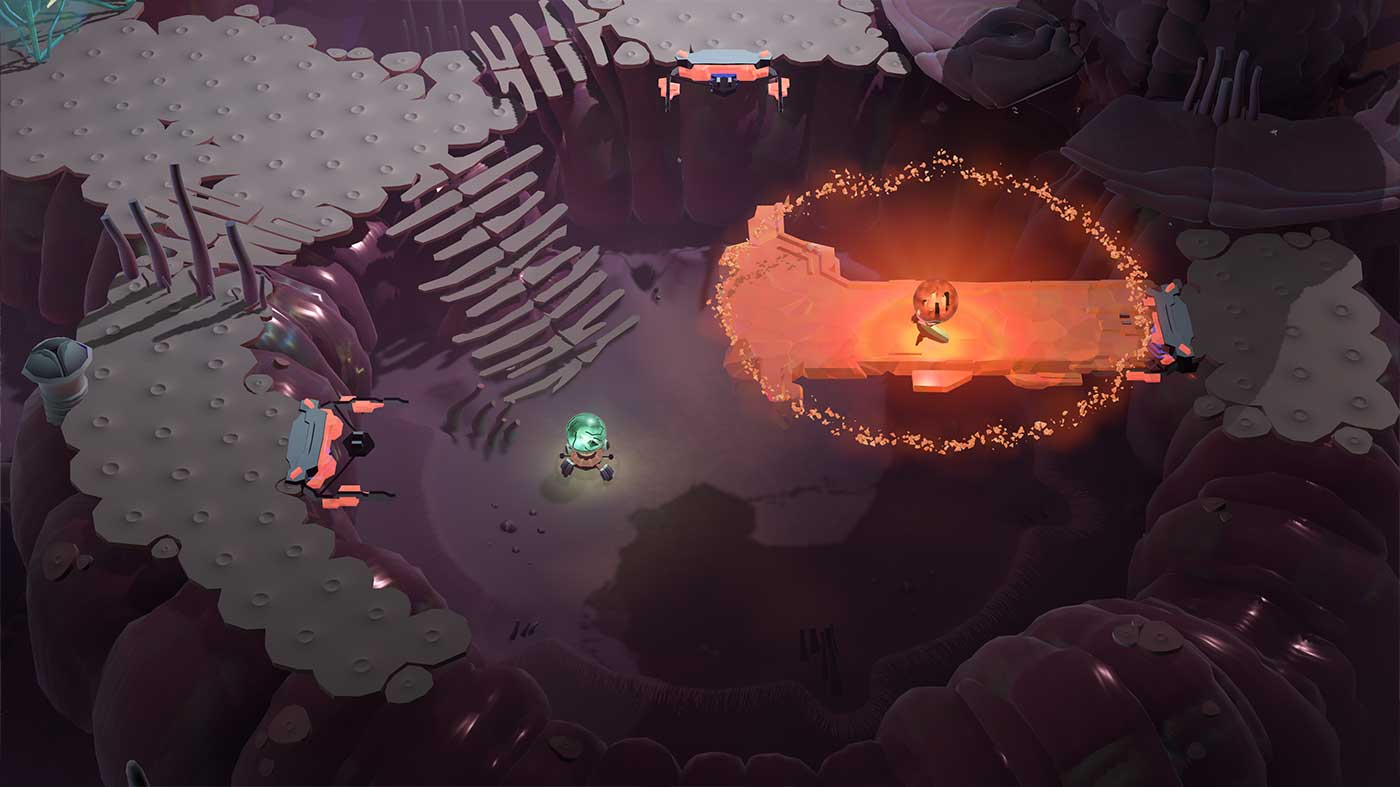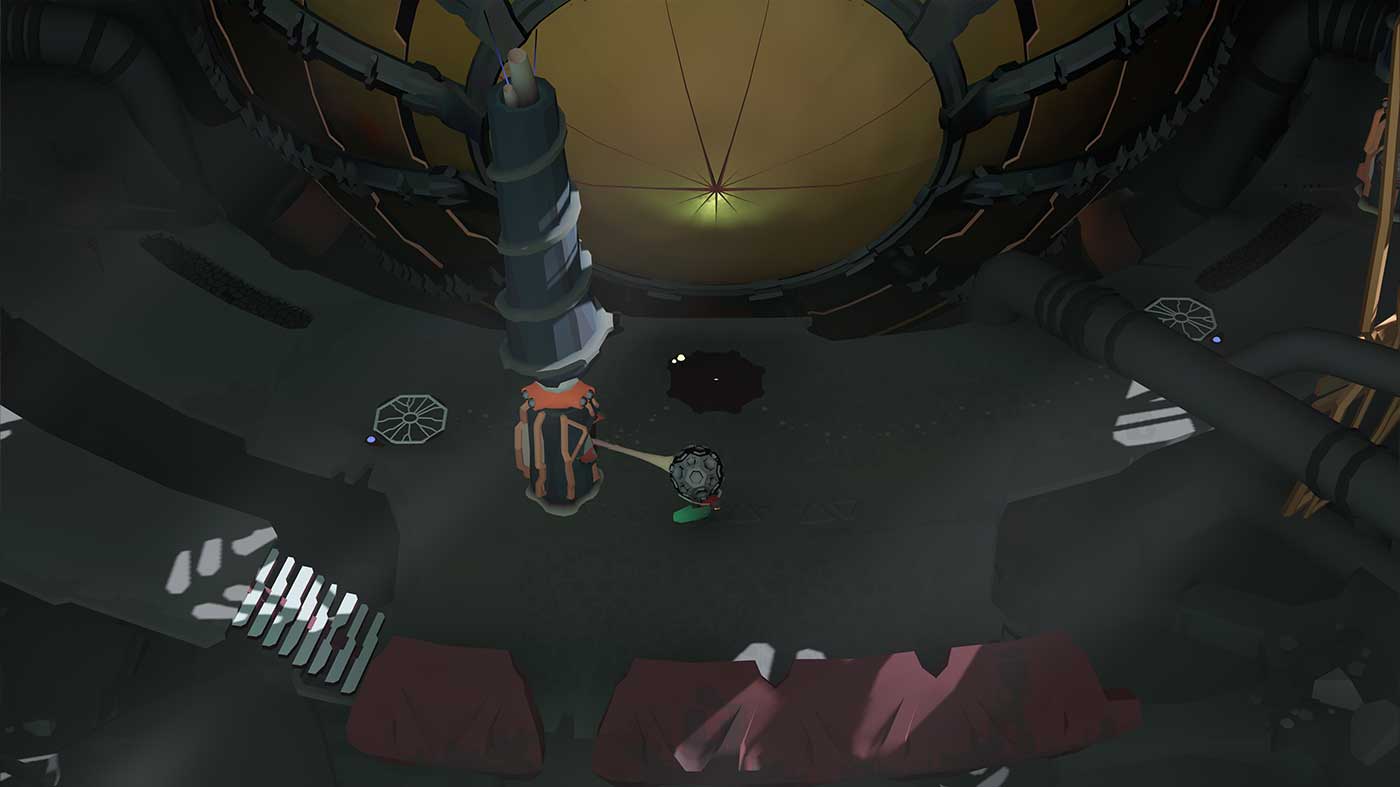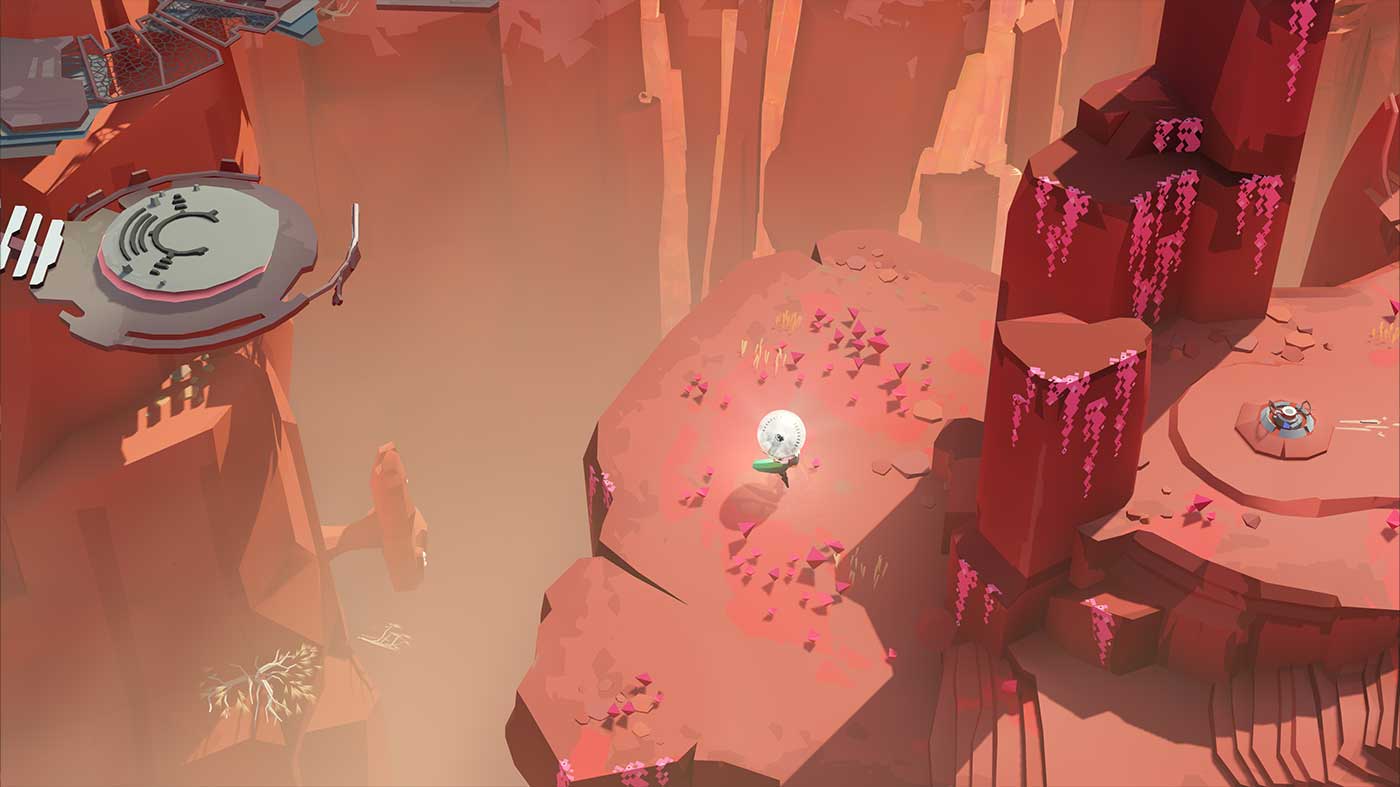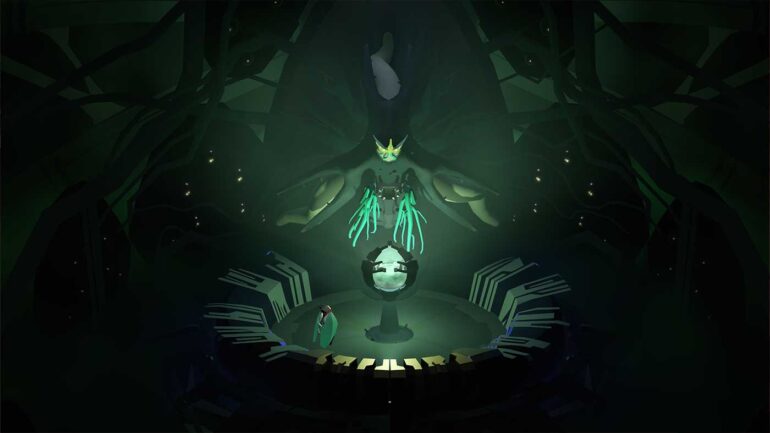I was fortunate to find a sliver of time to sit down and spend almost an hour within the worlds of Cocoon, a new adventure-puzzle game from the mind of Jeppe Carlsen. I was offered the opportunity to swap to Annapurna’s other floor title at the backend of my impromptu sit-down, however I was so captivated by Cocoon I couldn’t put it down.
(I’m sorry, Thirsty Suitors. I will come back for you.)

As the gameplay lead for two of my long-enduring favourites in Limbo and Inside, Carlsen’s knack for puzzle craft is perhaps the most glaringly obvious link back to those works. It’s far more ambitious with regards to its art, mechanics, and narrative which, in typical fashion, feels as reticent as a flower’s bud. I’m excited to see what it blooms into and whether it can have the emotional resonance I felt from Playdead’s titles, but from an hour with it I already felt plenty.
Cocoon drops you straight into its curious little world with little to go off. It wastes no time in introducing its main mechanic which’ll serve you, and be iterated on, throughout the game. I was told I ‘got pretty far’ after being able to see two of the game’s bosses, and it was already evident to that point how Jepsen manages to keep the formula fun while keeping just the pre-established focal points.

Cocoon’s main gameplay loop centres on finding, using, and venturing inside mysterious orbs you’ll discover. During my demo, I discovered red and green orbs that housed their own tiny worlds within. Despite having seen the game’s trailer which obviously shows off Cocoon’s world-hopping mechanic, experiencing it first-hand, and how seamless it really is, is almost like magic. When not world-hopping, your small winged beetle-like hero can carry these precious orbs about, using them to open doors or, in the case of the red one, reveal light-bridges that speak to a long-lost, technology-rich civilisation lost for aeons.
To say the puzzle design is intuitive is an understatement. It felt as though Cocoon was acutely aware of my next step before I was, and is carefully designed with that in mind. There’s an irresistible flow I fell into just exploring and having everything fall into place. There were one or two puzzles that did trick me for a few moments, but the solution always felt within reach. It’s not a game that’s trying to trick you or obfuscate its solutions, which I appreciated—the answer was always right there, almost being shown to me.

Although I’m still getting my head around Cocoon’s worlds and the layers involved, I gleaned from the hands-on that each orb seems to house an ancient threat which, through your exploration, you’ll ultimately stir awake. Given Cocoon’s isometric viewpoint as well as, perhaps more importantly, its tone, it’s far better suited to boss encounters than something like Inside or Limbo.
After taking down two bosses they were fairly similar in how they work. They’re boilerplate encounters that test your understanding of the game’s mechanics to that point, often spanning several phases. What’s cool with Cocoon is that a boss typically won’t “kill” you, it’d rather ensnare you and hurl you back into the world you descended from which is a tremendous effect that, again, showcases the optimisation and whiplike loading.

What I’ve experienced of Cocoon so far shows the promise of an intelligent, cleverly crafted game that has the flash to match. So much of its mystery and allure is in its beautiful worlds, which players are able to jump between without a loading screen in sight.
Even still, as I write this in my hotel, its contracted worlds and long lost colonies call out to me. Not only is Cocoon the best thing I’ve gone hands-on with during my time here, it has the makings of a real Game of the Year contender.



